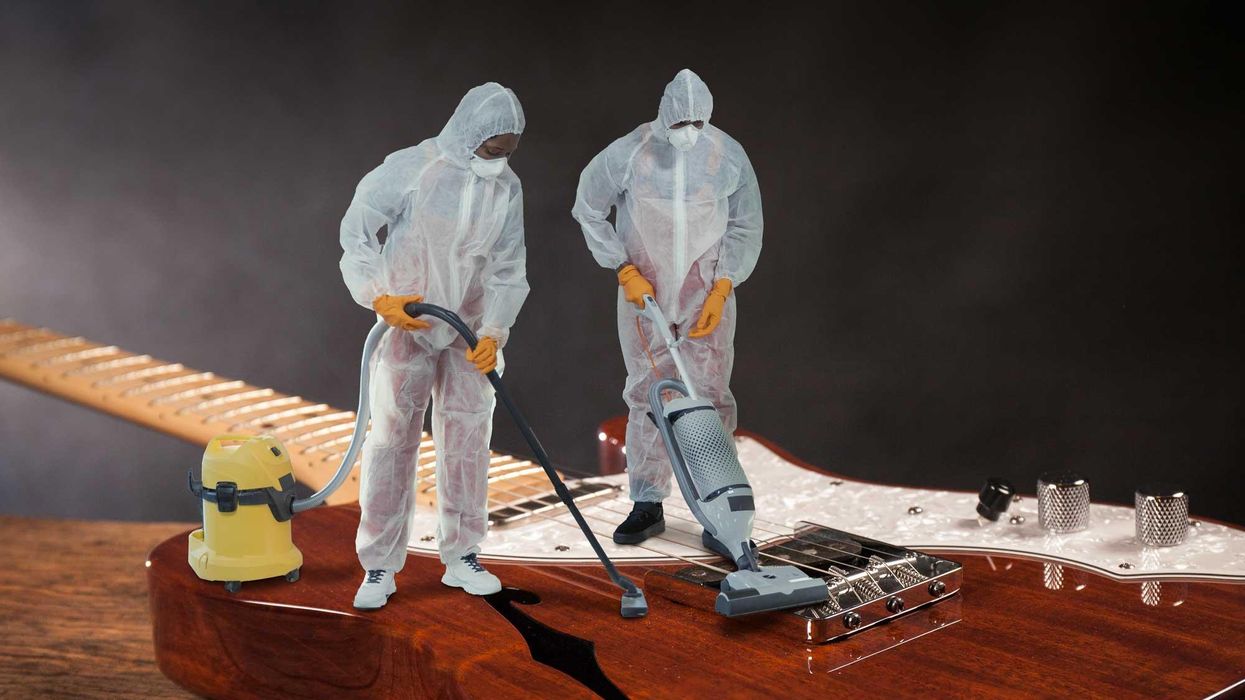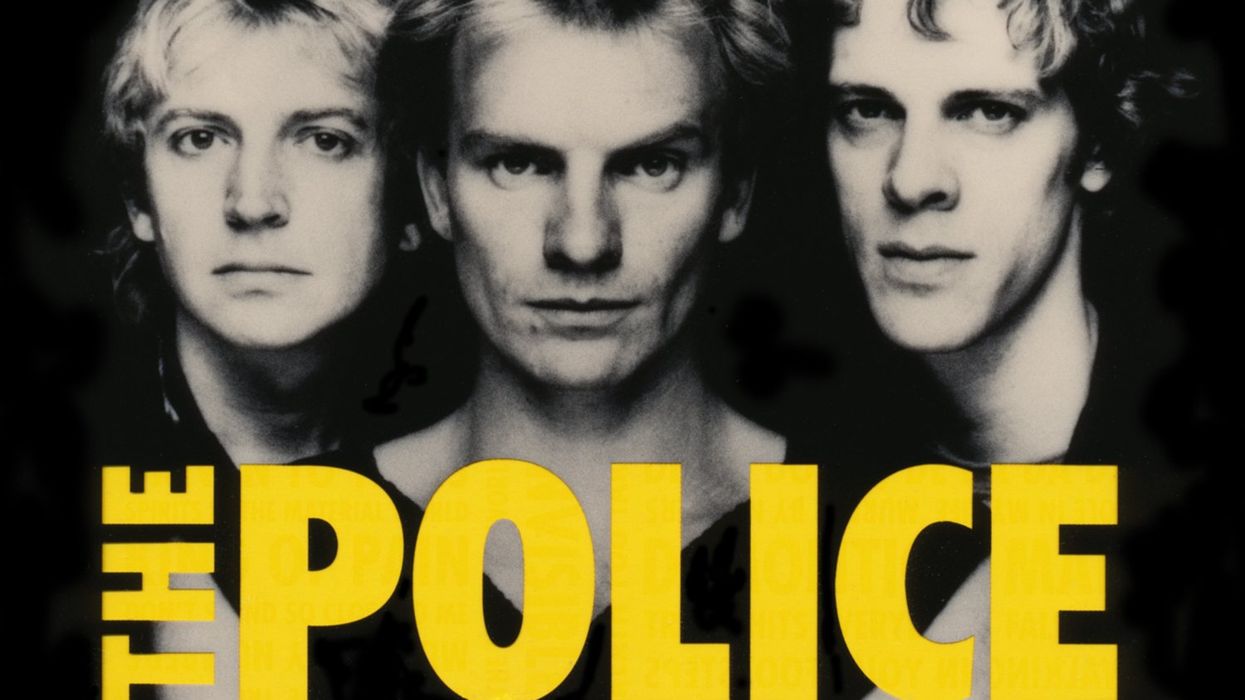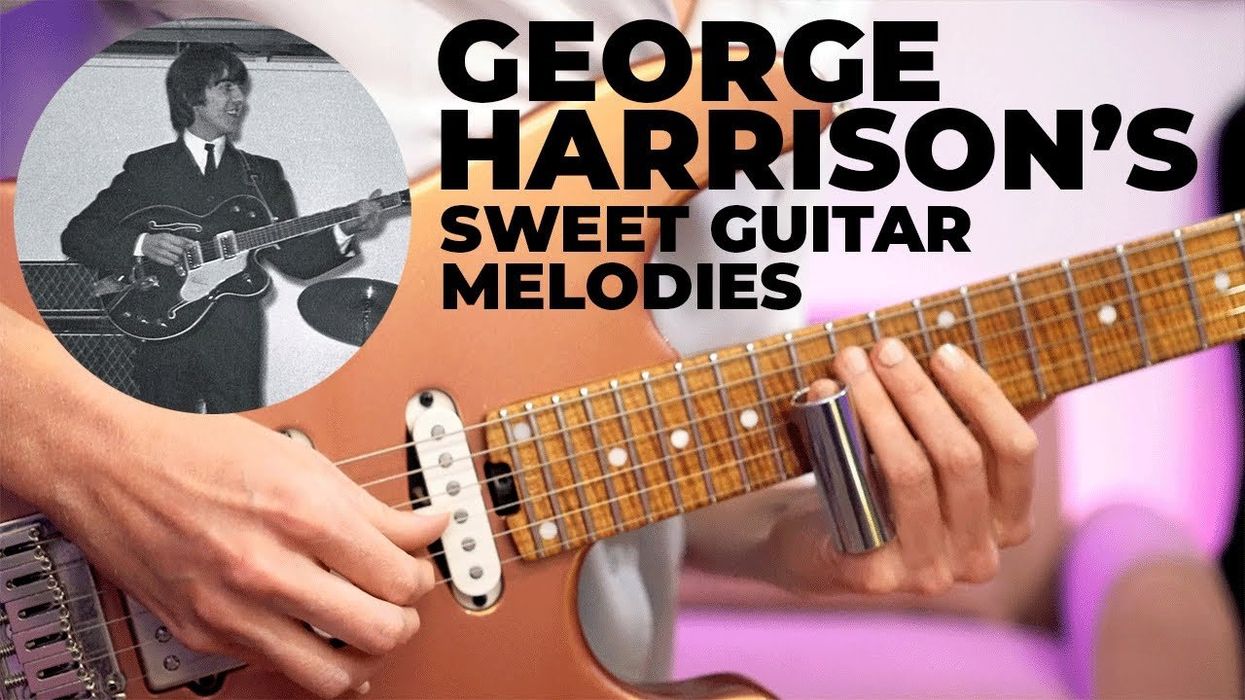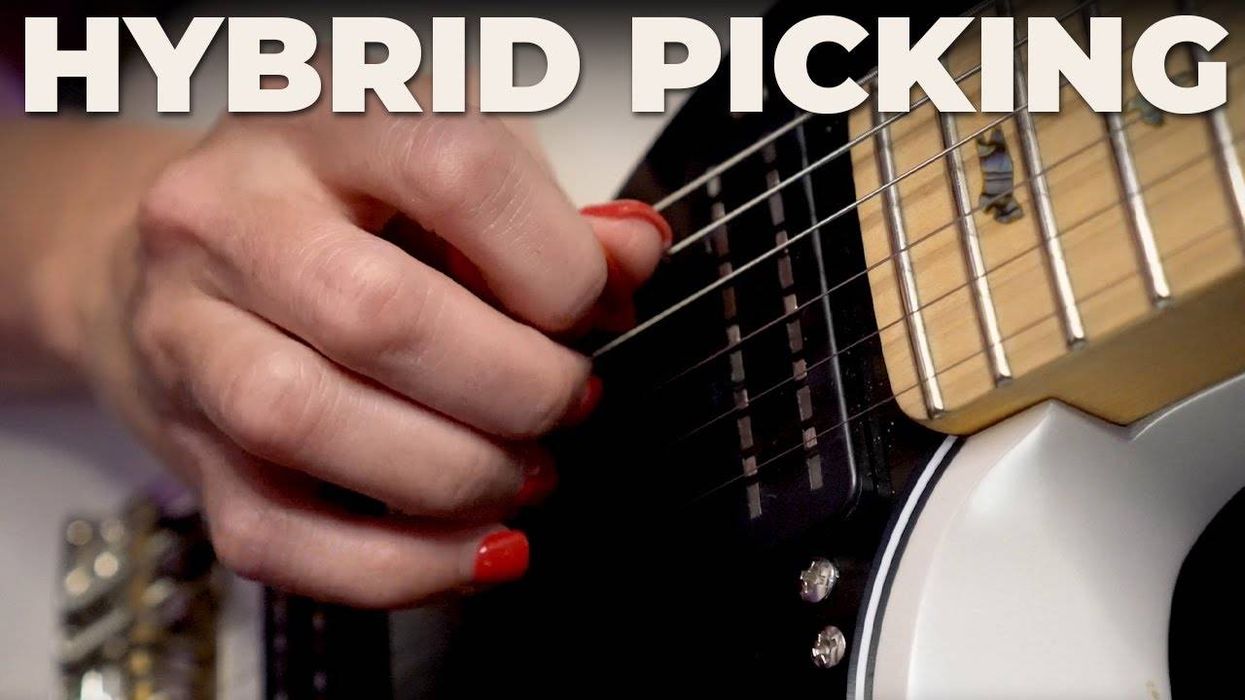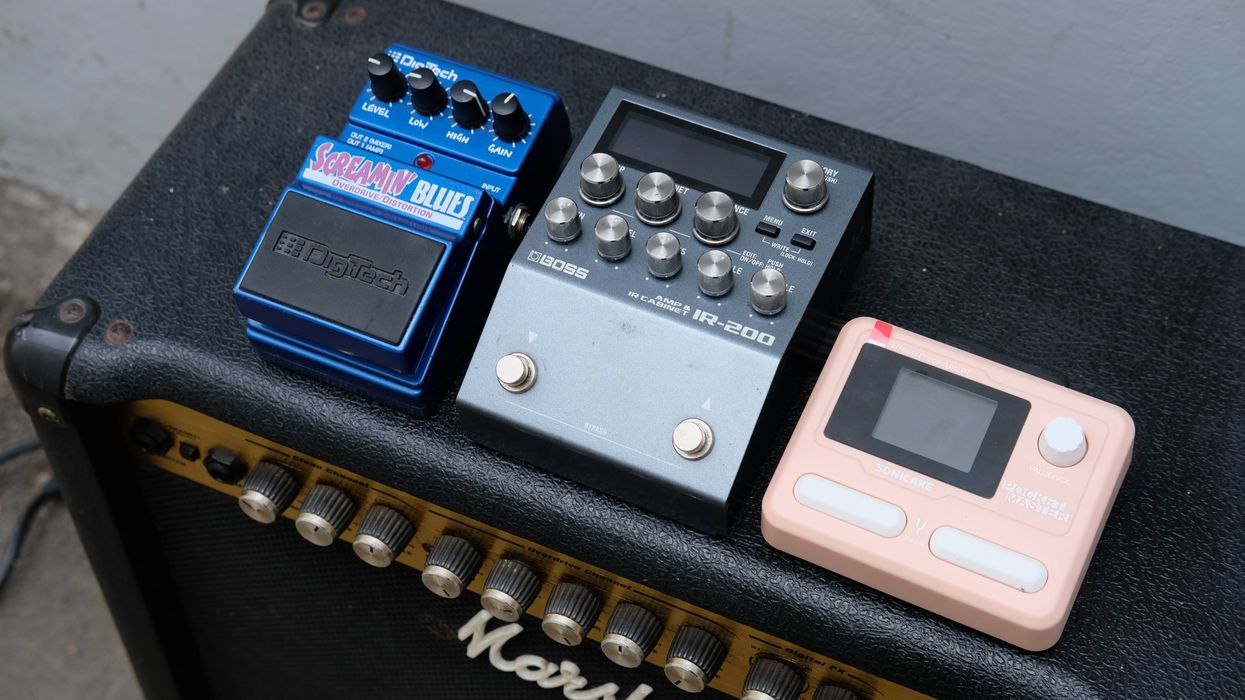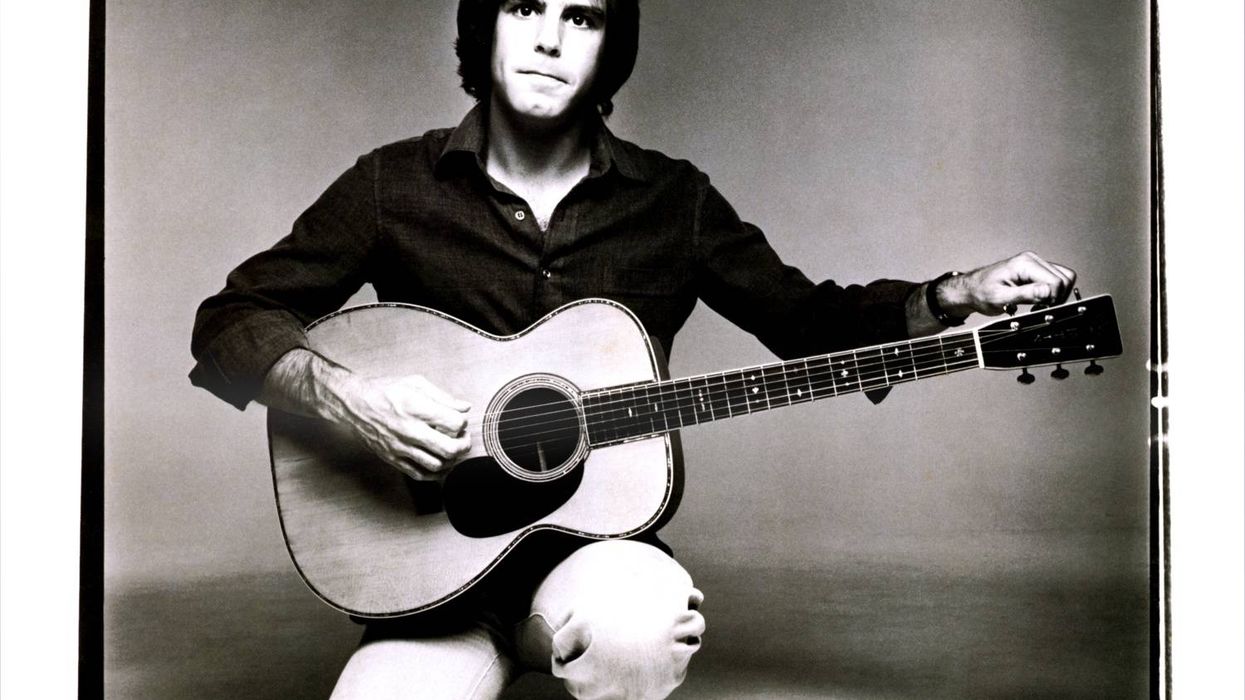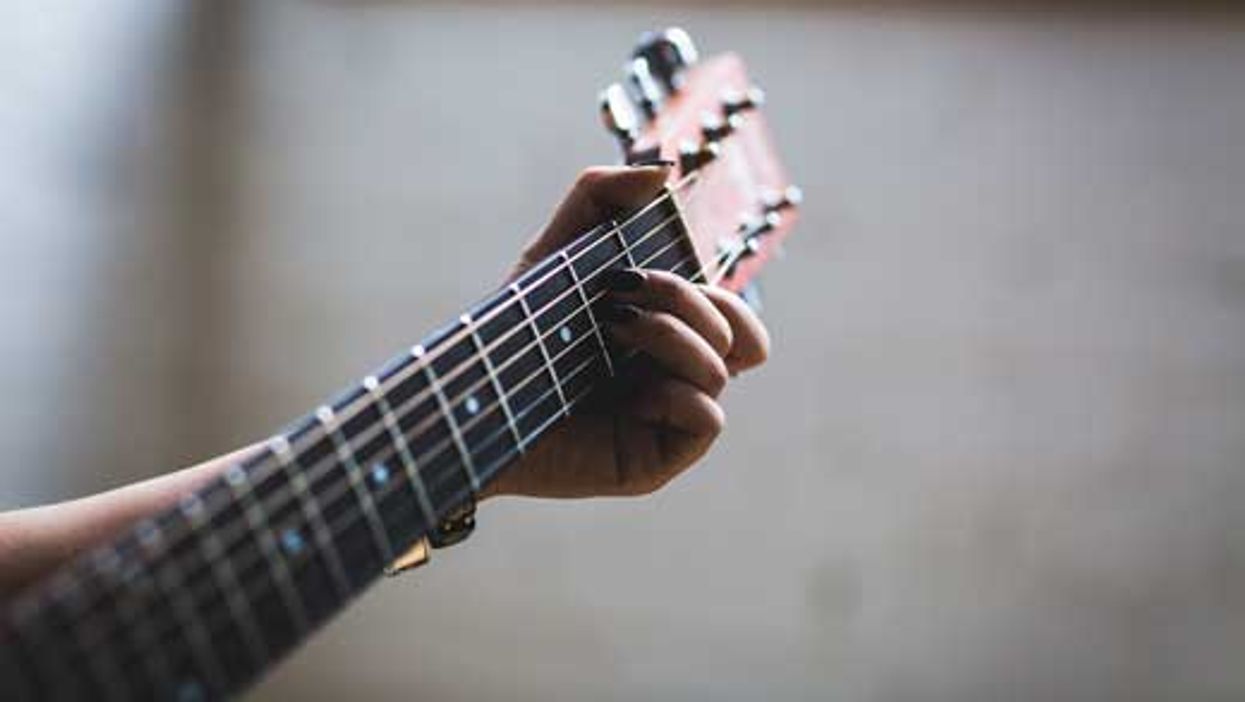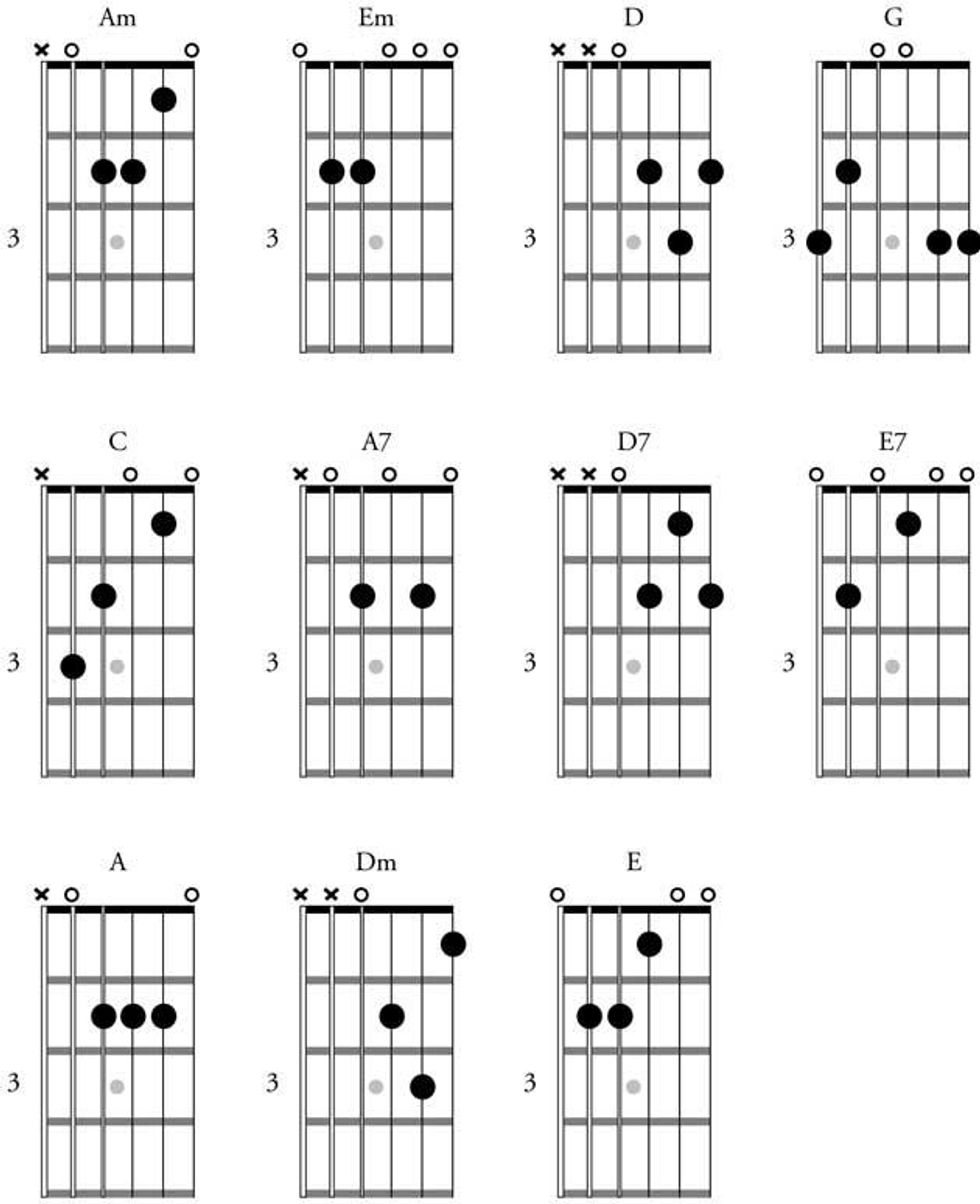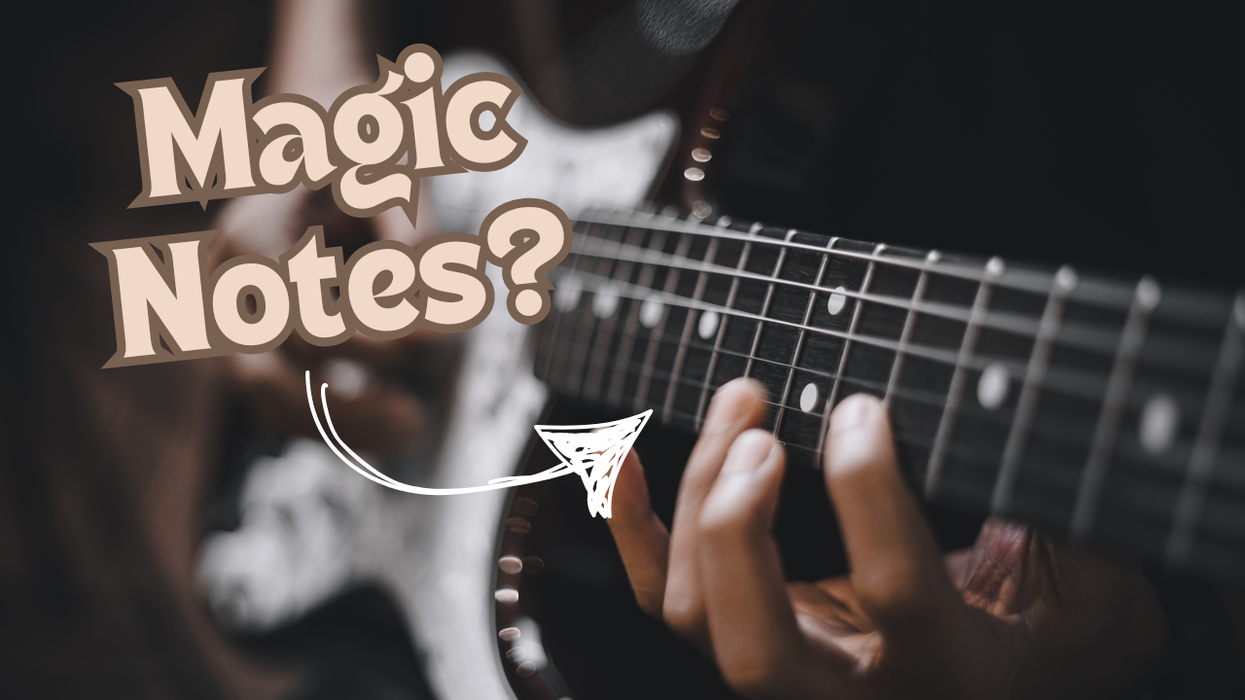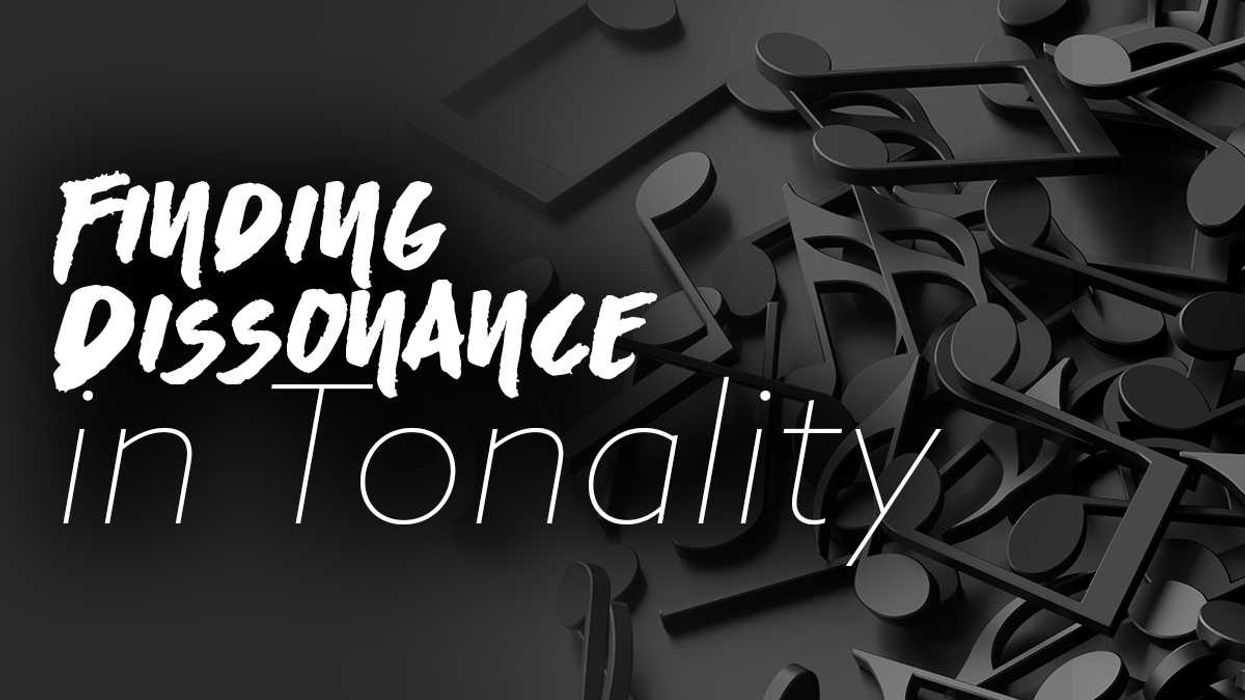Chops: Intermediate
Theory: Beginner
Lesson Overview:
• Create interlocking guitar parts that work over a funk groove.
• Learn how to use partial chords to imply harmony.
• Develop a better sense of rhythm by using space.
Click here to download a printable PDF of this lesson's notation.
Funk. It’s the kind of music that makes your face snarl uncontrollably. It makes your head bob, your shoulders shake, your feet tap. As James Brown sang, it makes you “Get Up Offa That Thing.”
Over the past few years, I’ve had the incredible honor to learn the nuances of funk from a true master: Prince. Performing as a member of 3RDEYEGIRL and the New Power Generation was the experience of a lifetime. I was schooled at the “university” of Paisley Park and spent hours grooving with my fellow musicians on the most disgusting—in the best way possible—jams. Sometimes we’d play songs for over 20 minutes at a time with our heads shaking “no” and faces contorted. That’s when you know the music is truly funky. When it’s locked in, the groove can go on for days.
In this lesson, I’ll demonstrate how I approach tone, attack, rhythm, melody, and harmony in funk guitar. The examples below are inspired by my “funklopedia,” which is a collection of riffs and grooves I’ve compiled over the past few years from live recordings and jam sessions. It’s the musical vocabulary of the genre. The audio examples fit together like pieces of a puzzle to create a mini funk orchestra—a “funkestra” if you will—of interlocking parts. In the end, it’s all about playing in the pocket, complementing other lines, and sticking to a groove delivered with attitude and conviction.
I’d suggest dialing in the most crystal-clear clean tone you can find on your amp. Try cranking the master and then adjust the preamp to a comfortable volume. Next, roll down the bass, make sure the treble is cutting through, and adjust mids to taste. In terms of attack, imagine sounding each note for the shortest length of time possible, as if it has no value, unless obviously heard otherwise.
Let’s start with a simple E7 riff that emphasizes the chord’s root, 5, and b7 (Ex. 1). Creating space for the other parts is important. Keep the notes low and the rhythm straight. Have a listen to “Cold Sweat” by James Brown for a similar vibe. The pentatonic fill in the last measure breaks up the phrase just enough to outline a structure to the jam.
Click here for Ex. 1
Harmonically, funk is usually played over a I7 chord (which you can color by including the 9 and/or the 13). Ex. 2 illustrates two examples of 9th chords. Slide into the first voicing (E9) from a half-step below. No need for a root. Most of the time, you can stick to only strumming the top two or three strings. The intent is for the chord to sound extremely percussive, not bulky. The second E9 voicing can be found in measure 8. Check out “Thank You (Falettinme Be Mice Elf Agin)” by Sly & The Family Stone below as a reference for the sound and rhythmic placement of this chord.
Also included in Ex. 2, is a super funky technique, where you imply a 13#9 chord while bending the #9 (written here enharmonically as G) almost up to the 3 (G#). A good example of this technique can be heard in Prince’s classic “Kiss.”
Click here for Ex. 2
Ex. 3 starts off with a crunchy voicing of a root and b7. These two notes fit great over a dominant chord and playing them staccato on the first two strings adds a percussive element. The 13#9 voicing is one of my favorites. Hammering-on and pulling-off between the 5 (B) and 6 (C#) is so funky!
Click here for Ex. 3
Next up: single notes. The funky qualities in Ex. 4 include heavily syncopated 16th-note rhythms, percussive fret-hand muting, and using the E Mixolydian (E–F#–G#–A–B–C#–D) scale. The rhythmic placement of the double-stop fill is in response to the space heard in the previous examples. When you’re coming up with funk lines of your own, always listen for the pocket and complement your bandmates’ parts with lines that sing in the spaces.
Click here for Ex. 4
Ex. 5 adds a melody to the groove. Notice the call-and-response quality of two measures of rest and two measures of melody. When playing in a group, especially one the size of most early funk bands, this kind of interplay is key. Listen to how the horns and group vocals are perfectly arranged by bigger bands like George Clinton and Parliament Funkadelic, Tower of Power, and Earth, Wind & Fire.
Click here for Ex. 5
Get a few friends together and have each person play one of the previous five lines. (This would also be a perfect time to break out your looper too.) Once the music is really cookin’, you can take things up a notch by including “chicken grease.” This technique adds another level of intensity to the groove. As shown in Ex. 6, continuously strum a chord with a syncopated rhythm while letting the notes ring out. This is usually done for two or four measures at a time, followed by an equal amount of rest. Typically, either 7sus or 7#9 chords are used and this particular voicing uses the #9 (written as G) and 4. Each player can jump in and out of the arrangement in eight-measure sections. Now it’s time to build your own funkestra, create your own funklopedia, and keep the groove alive!

